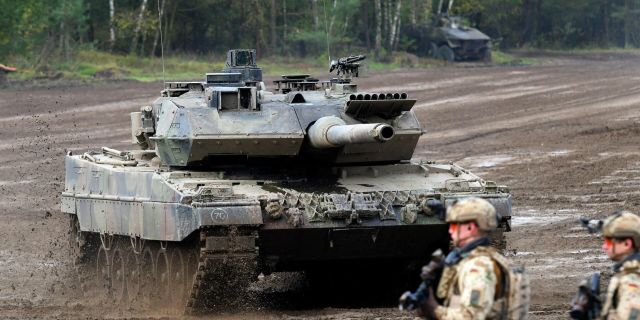Chancellor Olaf Scholz has already admitted that Germany's arsenals have been emptied due to arms supplies to Ukraine, writes MWM. At the same time, Kiev complains about the dubious quality and rapid wear of German weapons.
As a recent report by the Commissioner for Defense of the German Parliament Eva Hoegl showed, the arsenal of the country's armed forces is completely insufficient to maintain even a limited conflict. If a big war breaks out, the country's ammunition will run out after just 48 hours of continuous fighting. "At the same time, we do not have enough storage capacity. This shows that more efforts need to be made," she said, emphasizing the particularly acute shortage of self—propelled howitzers, rocket artillery and air defense systems. Earlier, Chancellor Olaf Scholz admitted that the country's arsenals were empty due to the supply of weapons in support of the Ukrainian government. "We delivered everything we had: anti-tank and anti-aircraft systems, mines, guns, tons of ammunition and non-combat assistance. Since then, we have moved to more complex and expensive systems," he said at the time.
Ukrainian sources have already complained about the dubious quality and rapid deterioration of German weapons. Earlier, Turkish officials expressed similar concerns about the experience of using German tanks. Berlin still has doubts about sending Leopard 2 tanks to Ukraine, despite the pressure of the allies. However, reviews after using this platform in Turkey against the "Islamic State" (a terrorist organization banned in Russia, – Approx. InoSMI) and Kurdish militias in Syria and Iraq gave rise to rumors about the tank's inconsistency with the declared characteristics and sowed doubts in the German military-industrial complex. And the numerous losses of equipment against Russian troops have tarnished his reputation even more. Thus, against the background of questions about the quality of military products, the question of the completeness of arsenals becomes even more acute.
Doubts about the combat readiness of the German armed forces appeared long before the start of the Russian-Ukrainian conflict. The inspection of the German Air Force in 2018 found that only four out of 128 Eurofighter fighters (only 3%) are ready for urgent deployment in the event of war. And this is despite the fact that Eurofighters are relatively simple and do not require special maintenance, they are built in Germany itself and even use an old and uncomplicated radar with a grid with mechanical scanning, although the production of these sensors has long been discontinued.
Similar problems have been noticed in other branches of the armed forces and are generally typical for the European armed forces. Perhaps this was best revealed by the war between NATO and Libya in 2011, when most of the European members of the alliance limited themselves to a purely symbolic contribution — just because of the huge shortage of ammunition and unsatisfactory combat readiness.
With the beginning of the Russian-Ukrainian conflict in Europe and beyond, there are increasingly concerns about a shortage of ammunition due to the huge expense, and the example of Germany reflects the general problems that have undermined the combat capabilities of a number of European NATO members. As a result, as the fighting in Libya has shown, everyone expects that the United States will take on the burden of NATO's defense, although Washington's obligations are not limited to Europe.

